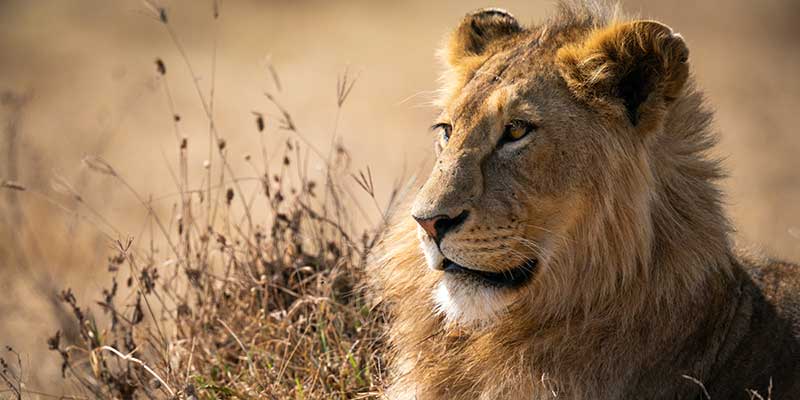
Hwange National Park
Named after the local Nhanzwa chief, the Hwange National Park is one of the world’s great elephant sanctuaries and Zimbabwe’s largest National Park, covering some 14600 km². It is located in northwestern Zimbabwe, just off the main road from Bulawayo and Victoria Falls and the border with Botswana.
Hwange’s Main Camp is located by road 275 km from Bulawayo and 174 km from Victoria Falls.
Map of the Hwange National Park
History of the Hwange National Park
Hwange National Park was declared a game reserve in 1928, and together with the neighboring Robins Game Sanctuary, Hwange became a National Park in 1949. Originally Robins Game Sanctuary belonged to a Mr. Robins, a cattle Rancher. Because his herds were constantly attacked by lions and leopards, he turned it into a wildlife sanctuary. He later handed it over to the government, in exchange for a house and a water supply.
Wildlife and nature of the Hwange National Park
The park is located on the edge of the Kalahari, with deep sandy soil. The Kalahari woodlands is dominated by big trees like Zambezi Teak, while the north-western parts of the park are dominated by mopane woodlands. Seasonal wetlands form grassland in the area.
In the early years of the park, the first game warden, Ted Davison, noticed that the wildlife in the park was almost nonexistent. The Kalahari sands of the area were unable to support permanent large wildlife populations. The relatively low rainfall, together with the seasonal pans and nonpermanent riverbeds did not supply enough water and only occasionally did large numbers game migrate into the area. Davison started to drill boreholes and established a network of artificial waterholes, resulting in the return of many game species into the area, especially elephants and buffalo. The animals roaming the park today also include rhino, giraffe, zebra, impala, kudu, sable, tsessebe and roan. Such numbers do attract predators like spotted and brown hyenas, lion and cheetahs. Just as diverse as the number of game species in the park are the number of bird species that can be found here.




